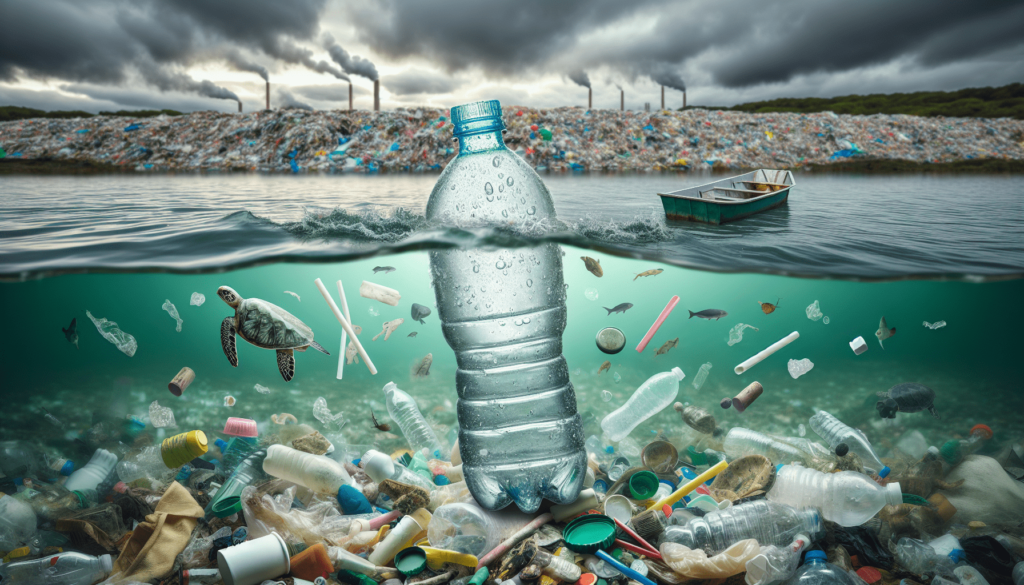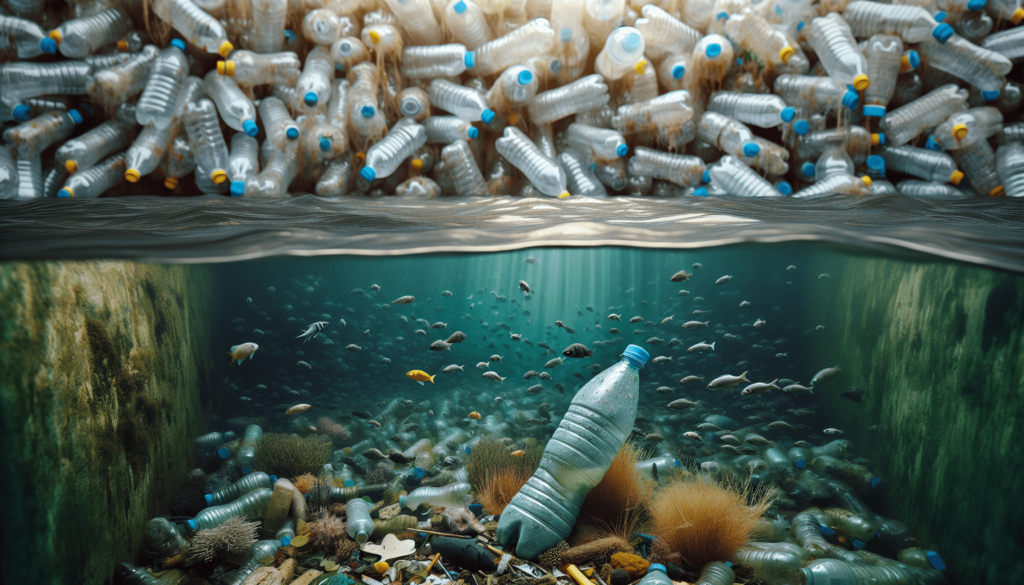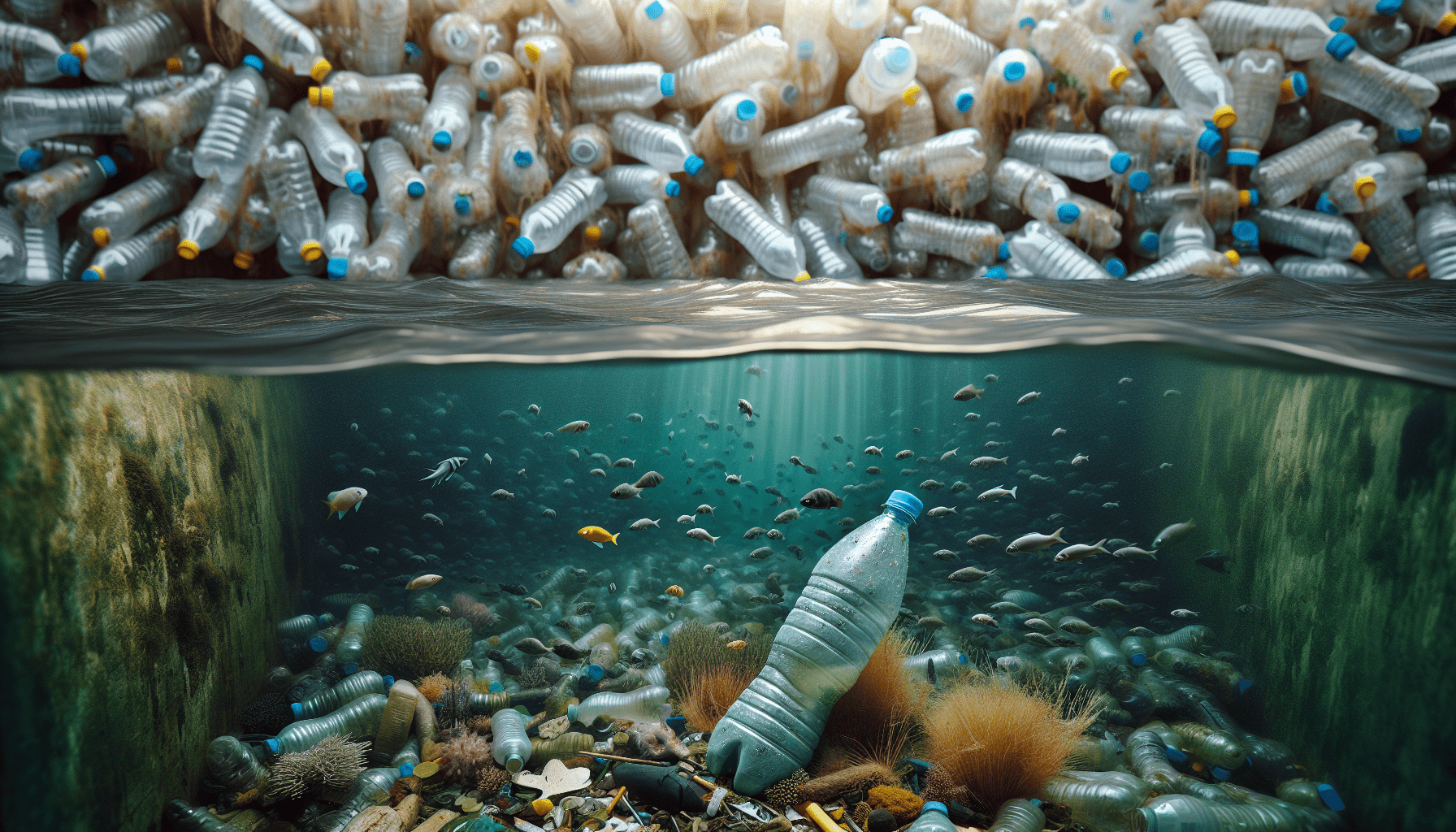Did you know that plastic water bottles have a significant environmental impact? From the production and transportation of the bottles to their disposal, these everyday items contribute to pollution and waste. This article explores the various ways in which plastic water bottles harm the environment, shedding light on the importance of finding alternative solutions to mitigate their negative effects. By understanding the consequences of our choices, we can make more conscious decisions that benefit not only our planet but also future generations.
1. Introduction
The prevalence of plastic water bottles
Plastic water bottles have become incredibly popular in recent years, with millions of them being produced and consumed worldwide every day. They have become a convenient and easily accessible option for quenching thirst on the go. However, their widespread use has brought about several concerning environmental impacts that cannot be ignored. From the manufacturing process to the disposal of these bottles, each stage poses a threat to the environment. In this article, we will explore the various aspects of the environmental impact of plastic water bottles, shedding light on the need for alternative solutions and individual actions to mitigate this issue.
2. Manufacturing Process
Extraction and production of raw materials
The manufacturing process of plastic water bottles begins with the extraction and production of raw materials, primarily petroleum and natural gas. These non-renewable resources are heavily relied upon for the production of plastic, making it an inherently unsustainable and environmentally damaging product. The extraction of these fossil fuels contributes to habitat destruction, air and water pollution, and the emission of greenhouse gases, exacerbating climate change.
Energy consumption during manufacturing
Another significant issue with the manufacturing process of plastic water bottles is the massive amount of energy required. From the extraction of raw materials to their refinement and the actual manufacturing process, a substantial amount of electricity and fossil fuels are consumed. This energy consumption contributes to the depletion of natural resources and increases carbon emissions, further intensifying the environmental impact of these bottles.
Release of greenhouse gases
The production of plastic water bottles releases a substantial amount of greenhouse gases, primarily carbon dioxide and methane. These gases contribute to the greenhouse effect and global warming, leading to adverse effects on the climate and ecosystems. Additionally, the extraction and refining of raw materials for plastic production also release greenhouse gases, aggravating the environmental consequences.
Generation of plastic waste
Perhaps one of the most significant concerns surrounding plastic water bottles is the generation of plastic waste. Once these bottles are manufactured and distributed, they often end up in landfills or littered in the environment. Plastic takes hundreds of years to decompose, contributing to the already massive issue of plastic pollution. The extensive use of single-use plastic water bottles greatly contributes to the overall plastic waste crisis, highlighting the pressing need for more sustainable alternatives.

3. Water Usage and Pollution
Water consumption during bottle production
The production of plastic water bottles requires a significant amount of water. From the extraction and refining of raw materials to the actual manufacturing process, water is consumed in large quantities. This high water demand puts additional pressure on already strained water sources, particularly in areas suffering from water scarcity. Moreover, the production of plastic water bottles contributes to water pollution, as chemicals used in the manufacturing process can end up contaminating water sources, further exacerbating the water crisis.
Contamination of water sources
The manufacturing process of plastic water bottles involves the use of various chemicals, many of which are harmful to the environment and human health. These chemicals can leach into water sources, contaminating both surface water and groundwater. Contaminated water can have severe implications for ecosystems, wildlife, and human populations that rely on these water sources for drinking and irrigation.
Impact on aquatic ecosystems
The contamination of water sources due to plastic water bottle production poses a severe threat to aquatic ecosystems. Aquatic plants and animals can be adversely affected by the chemicals leaching from these bottles. Additionally, the accumulation of plastic waste in water bodies leads to suffocation and entanglement of marine animals, disrupting their habitats and ultimately leading to a decline in biodiversity. The extensive use of plastic water bottles directly contributes to the endangerment and destruction of aquatic ecosystems worldwide.
4. Waste Generation and Disposal
Plastic bottle waste statistics
The production and consumption of plastic water bottles result in staggering amounts of waste. It is estimated that globally, over a million plastic bottles are purchased every minute, with a vast majority of them ending up either in landfills or as litter in the environment. In many cases, these bottles are not properly disposed of and find their way into rivers, oceans, and other natural habitats, causing irreversible damage to the environment.
Problems with plastic recycling
Recycling plastic water bottles seems like a viable solution to reduce waste. However, the reality is that recycling plastic bottles poses significant challenges. Firstly, not all plastic bottles are recycled due to inadequate recycling infrastructure, lack of public awareness, and improper waste management practices. Secondly, the recycling process itself requires a substantial amount of energy and resources, and not all plastic can be recycled indefinitely, leading to a limited lifespan for recycled bottles.
Landfilling and incineration challenges
When plastic water bottles are not recycled, they often end up in landfills or are incinerated. Both landfilling and incineration pose their own set of challenges. Landfills are already overburdened with waste, and the slow decomposition rate of plastic bottles means they will occupy space for centuries. Incineration, on the other hand, releases harmful pollutants and greenhouse gases into the atmosphere, contributing to air pollution and climate change. These disposal methods are unsustainable and perpetuate the environmental impact of plastic water bottles.

5. Ecological Damage
Harm to wildlife
The use of plastic water bottles has detrimental consequences for wildlife. Animals often mistake plastic bottles for food or get entangled in them, leading to injury and even death. The ingestion of plastic bottles can cause blockages in the digestive system and malnutrition, ultimately leading to a decline in animal populations. Additionally, the sight of plastic littered in habitats can disrupt natural behavior and mating patterns, further contributing to the ecological damage caused by plastic water bottles.
Marine pollution and plastic ingestion
Plastic water bottles are a significant contributor to marine pollution. The improper disposal and littering of these bottles result in them finding their way into rivers and oceans, where they break down into smaller pieces known as microplastics. Marine animals, including fish, birds, and marine mammals, mistake these microplastics for food and ingest them. This ingestion not only affects the health and survival of these animals but also facilitates the transfer of harmful chemicals up the food chain, posing a risk to human health as well.
Microplastics and their impact on ecosystems
The breakdown of plastic water bottles into microplastics has far-reaching consequences for ecosystems. Microplastics are pervasive and can be found in a wide range of environments, including soils, water bodies, and even the air we breathe. These tiny particles can accumulate in ecosystems, disrupting natural processes and impacting the health of organisms. Microplastics have been linked to various adverse effects such as reproductive issues, immune system disruption, and even death in certain species. The extensive use of plastic water bottles significantly contributes to the proliferation of microplastics, exacerbating these ecological impacts.
6. Energy and Resource Consumption
Fossil fuels and electricity consumption in bottle production
As mentioned earlier, the production of plastic water bottles relies heavily on the consumption of fossil fuels and electricity. From extracting the raw materials to the manufacturing process itself, fossil fuels are burned, and electricity is consumed at alarming rates. This overreliance on non-renewable resources not only contributes to environmental degradation but also perpetuates our dependence on finite resources in an era that demands more sustainable alternatives.
Resource depletion and environmental degradation
The extraction of raw materials for plastic water bottle production contributes to resource depletion and environmental degradation. The extraction of petroleum and natural gas requires the destruction of habitats and ecosystems, disrupting the delicate balance of nature. Additionally, the production of plastic results in the release of harmful pollutants and the generation of waste, further exacerbating the ecological damage caused by resource extraction and utilization. It is imperative that we recognize the need for more sustainable alternatives to minimize these detrimental impacts.
7. Carbon Footprint
Carbon emissions from production and transportation
The production and transportation of plastic water bottles result in significant carbon emissions. The manufacturing process, which requires large amounts of energy and fossil fuels, releases carbon dioxide and other greenhouse gases into the atmosphere. Additionally, transporting these bottles from manufacturing facilities to distribution centers and eventually to consumers contributes to carbon emissions from transportation. These emissions contribute to climate change, affecting weather patterns, ecosystems, and human livelihoods.
Contributions to climate change
Plastic water bottles are one of the many contributors to climate change. The emissions associated with their production, transportation, and disposal add to the overall carbon footprint of human activities. The release of greenhouse gases, primarily carbon dioxide, contributes to the greenhouse effect, trapping heat in the atmosphere and leading to rising temperatures. The consequences of climate change, such as extreme weather events, sea-level rise, and habitat loss, have significant implications for both the environment and human populations. Addressing the environmental impact of plastic water bottles is an essential step towards mitigating climate change.
8. Alternatives and Solutions
Reusable water bottles
One of the most straightforward alternatives to plastic water bottles is the use of reusable bottles. Investing in a high-quality, durable water bottle allows you to have access to water on the go without relying on single-use plastic bottles. Reusable bottles can be made from various materials such as stainless steel, glass, or BPA-free plastic. They offer the convenience of being able to fill up your bottle at water fountains or taps, reducing the need for disposable bottles and ultimately minimizing environmental impact.
Tap water and filtration systems
Another alternative to plastic water bottles is tap water, which is often treated to meet strict safety standards. By using tap water and investing in filtration systems, you can ensure the quality and taste of your drinking water without relying on single-use bottles. Filtration systems can remove impurities and contaminants, providing you with clean and safe water at a fraction of the cost and environmental impact of bottled water.
Investing in public water infrastructure
Investing in public water infrastructure is crucial to address the issue of plastic water bottles. By improving the accessibility and quality of public drinking water sources, individuals are more likely to opt for tap water over bottled water. Governments and local authorities need to prioritize the development of reliable and clean public water sources, ensuring access to safe drinking water for all. This infrastructure investment also helps tackle water scarcity and reduce the overall environmental impact of bottled water consumption.
9. Government Regulations and Initiatives
Bottle deposit systems
Bottle deposit systems have proven to be effective in reducing the consumption of single-use plastic bottles. These systems involve adding a small deposit fee to the purchase of a bottle, which can be refunded when the bottle is returned. This incentivizes individuals to return their empty bottles for recycling, reducing litter and promoting recycling rates. Governments can implement bottle deposit systems to encourage the recycling of plastic water bottles and minimize their negative environmental impact.
Bans on single-use plastics
Several governments and municipalities worldwide have implemented bans on single-use plastics, including plastic water bottles. These bans restrict the production, sale, and distribution of plastic bottles, promoting alternative options such as reusable bottles or tap water. By eliminating the demand for single-use plastic bottles, these bans significantly reduce their environmental impact and encourage the adoption of more sustainable alternatives.
Promotion of recycling programs
Governments and organizations play a crucial role in promoting and facilitating recycling programs specific to plastic water bottles. By raising public awareness about the importance of recycling and providing accessible recycling bins, individuals are more likely to recycle their used bottles. Additionally, supporting research and development into innovative recycling technologies can improve the overall recycling rates of plastic bottles and minimize their impact on the environment.
10. Individual Actions and Awareness
Reducing plastic bottle consumption
As individuals, we can make a significant impact by reducing our consumption of plastic water bottles. By consciously avoiding their purchase and opting for reusable alternatives, we can help reduce the demand for single-use bottles. Developing habits such as carrying a reusable bottle with us, refilling it whenever possible, and advocating for the use of tap water can contribute to a considerable reduction in plastic bottle consumption.
Educating others about the issue
Increasing awareness about the environmental impact of plastic water bottles is vital in driving change. By educating our friends, family, and communities about the detrimental consequences of plastic bottle use, we can inspire others to make more informed choices. Sharing information about alternative solutions and the importance of recycling can help spread the message and encourage collective action towards a more sustainable future.
In conclusion, the environmental impact of plastic water bottles is a pressing issue that requires immediate attention. The manufacturing process, water usage, pollution, waste generation, and disposal of these bottles all contribute to significant harm to ecosystems, wildlife, and the planet as a whole. By investing in alternatives such as reusable bottles, promoting tap water and filtration systems, and supporting government regulations and initiatives, we can collectively work towards mitigating the detrimental effects of plastic water bottles. It is crucial for individuals to take action and raise awareness about this issue to ensure a more sustainable and environmentally conscious future.

